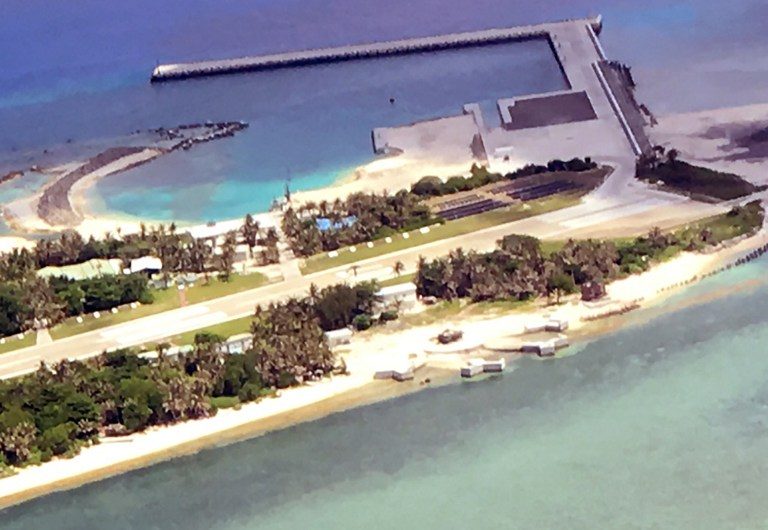SUMMARY
This is AI generated summarization, which may have errors. For context, always refer to the full article.

TAIPEI, Taiwan – Taiwan’s defense ministry has asked Google to blur images of a new development believed to be for military use on a disputed South China Sea island.
Tensions remain high in the region over conflicting territorial claims, particularly over the strategically important Spratlys chain.
Taiwan administers Taiping island, which is the largest in the Spratlys archipelago. The island chain is also claimed in part or whole by the Philippines, Vietnam and China.
Google satellite images show a circular structure with 4 Y-shaped attachments, jutting out to sea on Taiping’s northwestern coast.
The development comes after Taiwan last year inaugurated a solar-powered lighthouse, an expanded airstrip and a pier as part of efforts to strengthen defense capabilities on Taiping.
The defense ministry said it was in the process of contacting Google Thursday, September 22, to ask them to blur the satellite images, but would not comment further on what the structures are.
“It is classified information,” the ministry’s spokesman Chen Chung-chi said when asked the reason for the request to Google, which was made after images of the structures surfaced in local media.
Fears over possible military confrontation in the area have grown since an international tribunal ruling in July which rejected Beijing’s sweeping claims to almost all of the South China Sea – even waters approaching coasts of the Philippines and other Southeast Asian nations.
China outlines its territory using a vague map that emerged in the 1940s, resulting in an overlap with Taiwan’s claims.
The two sides split in 1949 after a civil war on the mainland, but Beijing still sees Taiwan as part of its territory.
Beijing angrily vowed to ignore the verdict from the tribunal in The Hague, prompting a warning from US President Barack Obama who emphaszsed that the ruling was binding.
Crucially for Taipei, the ruling stated that Taiping was legally a “rock” that did not give it an exclusive economic zone, undermining its claims to the surrounding waters.
Taiwan’s President Tsai Ing-wen, who has yet to visit the island since taking office in May, has said the verdict “severely jeopardized” Taiwan’s rights.
Her predecessor Ma Ying-jeou visited Taiping in January to press Taiwan’s claims, a move that triggered criticism from the US as well as protests from Vietnam and the Philippines.
Tensions have also been stoked by China’s rapid development of reefs in the South China Sea into artificial islands capable of hosting military planes. – Rappler.com
Add a comment
How does this make you feel?
There are no comments yet. Add your comment to start the conversation.